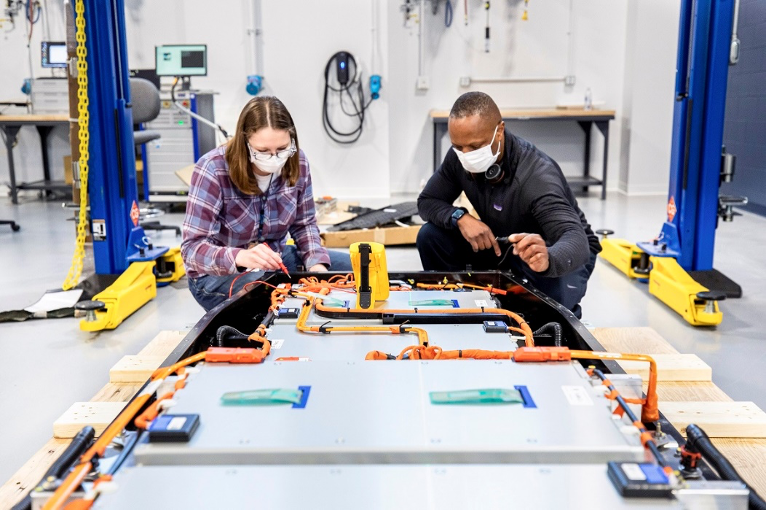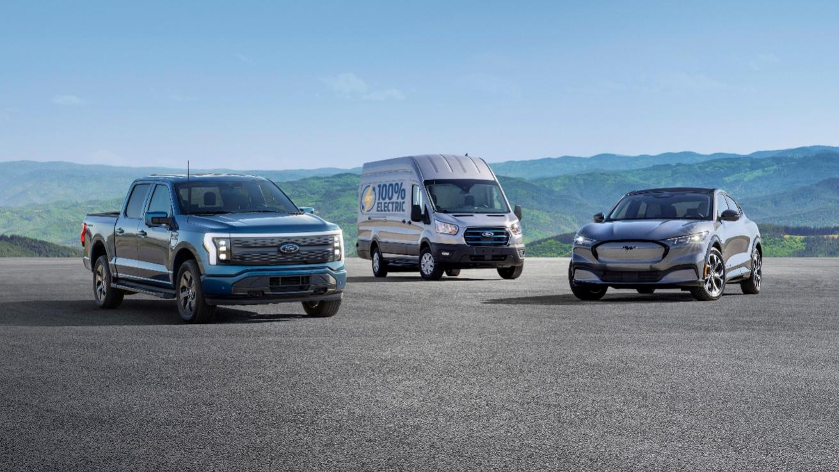Ford has announced the establishment of its global battery innovation center, Ford Ion Park, in Detroit. The aim is to enhance Ford’s research and manufacturing capabilities in battery cells and packs, and further accelerate its electrification process.
The core highlights of Ford’s global battery center are:
- The global battery innovation center includes a collaborative learning laboratory, which aims to create longer-range, lower-cost, and higher-yield battery cells.
- The global battery center will serve as a research and development hub for Ford to accelerate technological breakthroughs and optimize the entire value chain from battery materials acquisition to battery recycling.
- Ford is investing $185 million in the development and production of lithium-ion, solid-state cells, and power batteries.
- The global battery innovation center will bring together elite talents in battery technology development, research, procurement, and finance, with an estimated size of 200 people.

Electrification Transformation
Ford has already started the electrification journey from its most popular products. The Ford Mustang Mach-E has gained some popularity in the US market. Although its sales in the US reached only 2,465 units last month, accounting for only 2.2% of Ford’s total monthly sales, the chip shortage in the global market has caused a shortage of production, as the Mach-E new cars were sold out as soon as they stepped into dealerships. In addition, the pure electric pickup truck, F-150 Lightning, will be launched in mid-2022.
In the European market, Ford will achieve the electrification of all models before 2030, following local policies. Ford will also invest $1 billion in a new electric vehicle manufacturing center in Cologne, Germany.
In the domestic market, the Mustang Mach-E produced by Changan Ford will begin to be pre-ordered in the fall of this year and is planned to be delivered by the end of 2021. Recently, Ford also announced the establishment of an electric vehicle division and adopted a new retail model, just like other mainstream domestic electric vehicle companies. It has already set up 9 city stores in Beijing, Shanghai, Shenzhen, Chengdu, Qingdao, Dongguan, Chongqing, and Suzhou, and is expected to open 23 more city stores nationwide this year.

Conclusion
Ford plans to invest more than $30 billion in the electrification field by the end of 2050. This $185 million investment is a small step in its funding investment, but it may become a major step in Ford’s electrification transformation.Currently, more and more automotive companies are starting to develop their own batteries. Tesla’s 4680 battery is in the final stages of development, and Volkswagen is also establishing a research and development center with Guoxuan High-tech. Everyone is striving to reduce costs and increase production through independent research and development. Ford currently uses BYD’s NCM811 ternary lithium battery on its domestically produced Mach-E, and LG batteries in the United States. For Ford, independent research and development of batteries will have significant implications for its electrification transformation. At the same time, for the global market, the cost reduction of power batteries can indeed allow more consumers to buy more cost-effective products.
Source: Official Ford
This article is a translation by ChatGPT of a Chinese report from 42HOW. If you have any questions about it, please email bd@42how.com.
